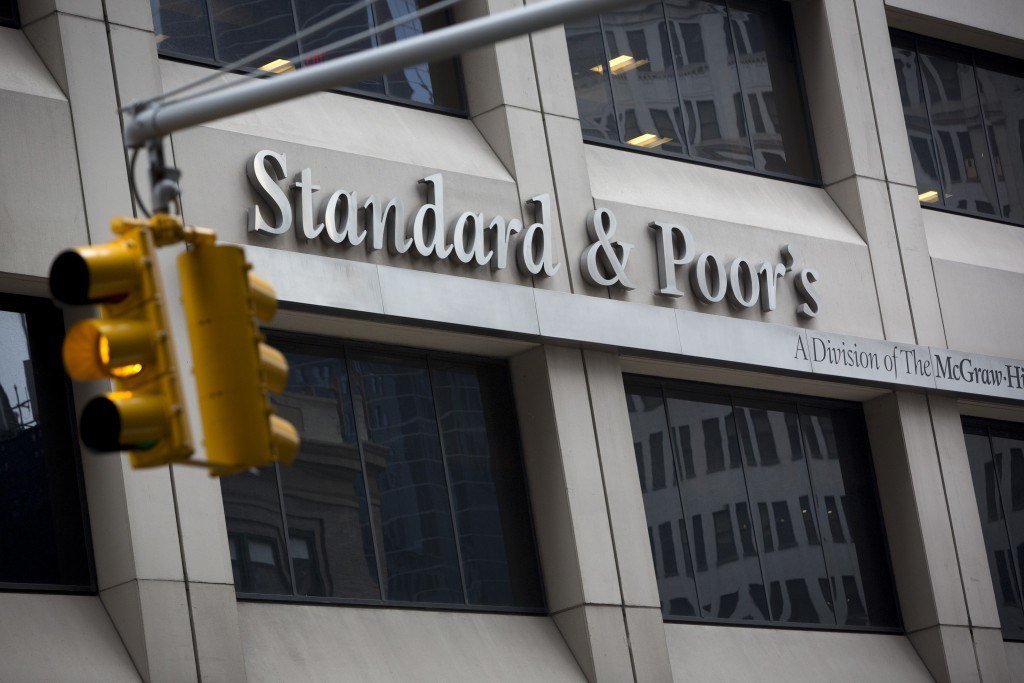S&P unexpectedly cuts outlook on SA’s junk-rated debt

S&P Global Ratings unexpectedly lowered its outlook on South Africa’s junk-rated debt to stable from positive, dealing a blow to the country’s efforts to regain an investment-grade rating.
The company revised the outlook while affirming the nation’s long-term foreign-currency rating at BB-, three notches below investment grade, according to a statement late Thursday. Its first South Africa sovereign credit rating action of 2023 had been expected May 19.
The less optimistic assessment reflects the risks to economic growth posed by “acute electricity shortages,” the slow pace of government reforms to address infrastructure shortfalls and improve governance at state-owned companies, whose contingent liabilities threaten to weigh on public finances, it said.
The revision signals the downward trend in S&P’s rating of South Africa has yet to reach a turning point. It was the first major ratings company to cut its assessment of the country’s debt to junk in 2017, after former President Jacob Zuma replaced the finance minister in a late-night cabinet shake-up.
“We could raise the ratings if there is an improving track record of effective reforms, resulting in structural improvements in economic growth alongside a reduction in public debt and contingent liabilities,” S&P said.
‘Poor record’
South Africa is enduring its worst period yet of electricity rationing, known locally as load shedding, as Eskom Holdings subjects the country to blackouts every day this year to protect the national grid from collapse as its old and poorly maintained coal-fired power plants struggle to meet demand.
While President Cyril Ramaphosa has introduced measures to encourage the self-generation of power by businesses and households, it will take time for the additional supply to “materially improve electricity availability,” S&P said.
“The government is taking urgent measures to reduce load shedding in the short term and transform the sector through market reforms to achieve long-term energy security,” the National Treasury said in a statement responding to S&P’s rating action. Reforms are also under way to improve the performance of the rail and broader transport sector, it said.
South Africa’s track record of procuring and constructing sufficient additional capacity to offset breakdowns and maintenance of its mostly coal-fired electricity production fleet has been poor, S&P said. The national state of disaster over energy shortages and the creation of an electricity ministry carries the risk that funds allocated under fast-tracked procurement processes may be mismanaged, while there are concerns around the “multiplicity” of ministries that Eskom now reports to, it said.
Contingent liabilities linked to state-owned companies, including Eskom, will remain a risk to the economy and public finances “until there is an adequate track record of improvements in operational and financial performance among these entities,” S&P said.
Finance Minister Enoch Godongwana announced a R254 billion debt-relief plan for Eskom on February 22, which the Treasury predicts will see government debt peak at 73.6% of GDP in the fiscal year ending March 2026. S&P expects government debt, including new funds that need to be raised for Eskom, to rise to 78.7% of GDP in that year.
The outlook for public finances is clouded by the impact of power outages on revenue collection and higher-than-budgeted spending risks, including potentially higher wage settlements for civil servants, bailouts for state companies and the possibility of a temporary welfare grant becoming permanent, it said.
“Fiscal consolidation measures have positioned the public finances to absorb a portion of Eskom debt, maintain support for the economy and the most vulnerable, and make budget additions to fight crime and corruption,” the Treasury said.

